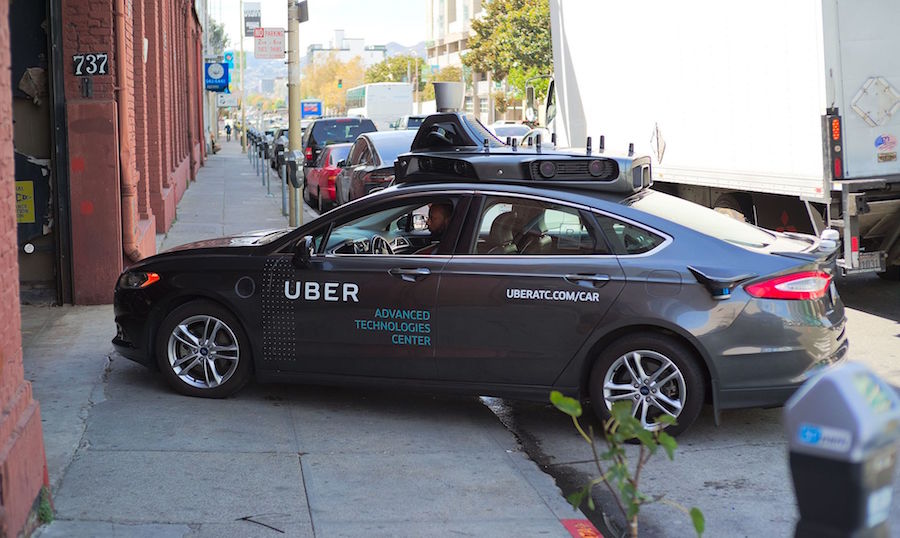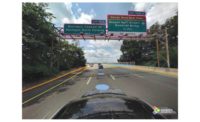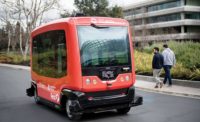As Google, Uber, Amazon and Tesla work to transform transportation, there’s an important task that should be taken up by civil engineers: better informing the public about the risks. The tech powerhouses are preoccupied with errands such as banishing the headaches of commuting, eliminating automobile crashes and rendering obsolete driving with hands on steering wheels and feet on pedals. Many jobs involving driving are going to disappear, but much good can come of these innovations, including improved safety.
Look at what Tesla is doing: proposing an unproven system involving narrower-than-usual tunnels through which magnetically supported “skates” will carry urban commuters to and from jobs and airports. To do it, Tesla is seeking permits to tunnel in the Chicago area and other places with its own tunnel-boring machine.

Although the tech giants no longer enjoy the esteem they once commanded before the realities of hacking and manipulation became national issues, these companies employ engineers and have vast resources that include lobbying and public relations. Because of the power and influence of these companies, independent engineering companies and engineers must serve as the honest brokers of information in explaining the safety aspects and risks of the new systems.
What bothered me was the facile way John Krafcik, CEO of Waymo (owned by Google’s parent) answered questions about safety put to him at the recent National Governors Association meeting in New Mexico. The interviewer gingerly broached the topic of accidents in the testing of autonomous vehicles, including the well-publicized pedestrian death in Arizona in March, when an Uber pilot-program car struck a woman crossing a dark road at night. Krafcik said that you have to be sensitive to the real losses people suffer in accidents such as these. But, he added, achieving the bigger picture—eliminating the roughly 35,000 annual auto fatalities, largely due to driver error—means not being deterred by the “bumps in the road” to accident-free driving.
Krafcik was basically putting a fresh coat of paint on an old, rarely spoken platitude: People must get killed en route to a better, safer transportation system.
Needed Sacrifice
This sentiment is similar to the some-may-be-sacrificed suggestion of the National Academy of Sciences, Engineering and Medicine. An academy committee in June stated that federal regulators were too slow in writing needed regulations for drone commerce. According to the committee, the public accepts the “background risk” of accidents on U.S. roads every day; delaying drone commerce through excessive risk aversion cheats the public of the life-saving potential of delivery drones and other benefits.
Compare the current situation to when the automobile industry was required to install three-point seat belts. What if state regulators had recognized the need in the 1950s instead of taking until the late 1960s and early 1970s to force installation of the belts?
Here is where engineers need to help: They should pull back the curtain on the safety calculations and claims being made by these powerful technology companies. The engineers must explain risk-based decision-making and the reasons for performance-based standards. They need to give people numbers everyone can understand. They need to raise the public IQ so that the inevitable accidents aren’t blown off as “bumps,” nor taken as reasons to abandon innovations.
Granted, engineering has always used deadly accidents to refine its designs and thinking about risks. In this case, the public needs more details about the steps to the transportation Shangri-la of Autonomous Vehicles before so much infrastructure and equipment is manufactured that the cost of adjustments is huge—such as with positive train control.
Compare the current situation to when the automobile industry was required to install three-point seat belts. What if state regulators had recognized the need in the 1950s instead of taking until the late 1960s and early 1970s to force installation of the belts?
All I’m asking is for an honest public discussion of the cost, risks and benefits of the shift to autonomous transportation systems. It’s too important to leave to the tech giants and government regulators eager to see the new technologies take root.
This location of the Uber test car accident was originally published as New Mexico but it took place in Arizona. The article was corrected Aug. 8th.
ENR Deputy Editor Richard Korman is currently a part-time fellow at the McGraw Center for Business & Financial Journalism at the City University of New York Graduate School of Journalism.
If you have an idea for a column, please contact Viewpoint Editor Richard Korman at kormanr@enr.com.






Post a comment to this article
Report Abusive Comment